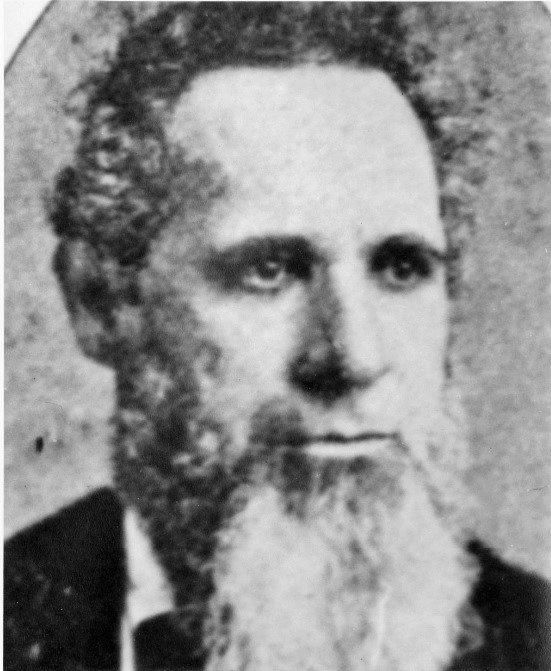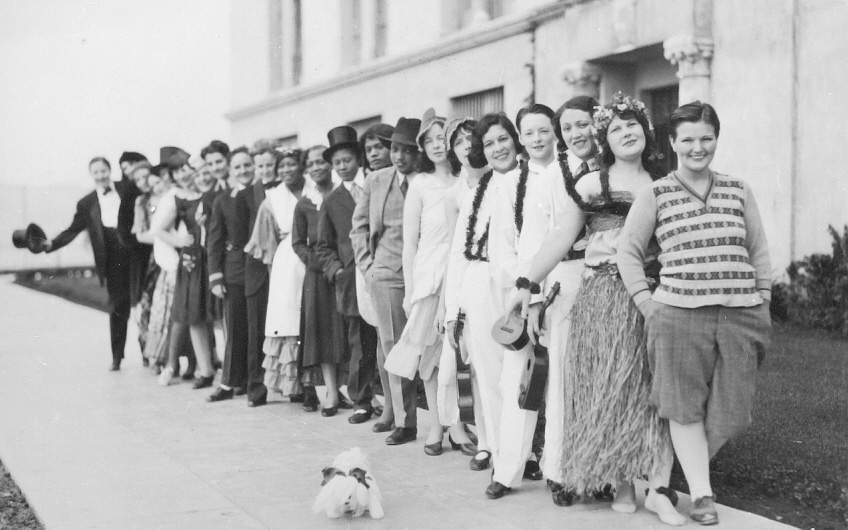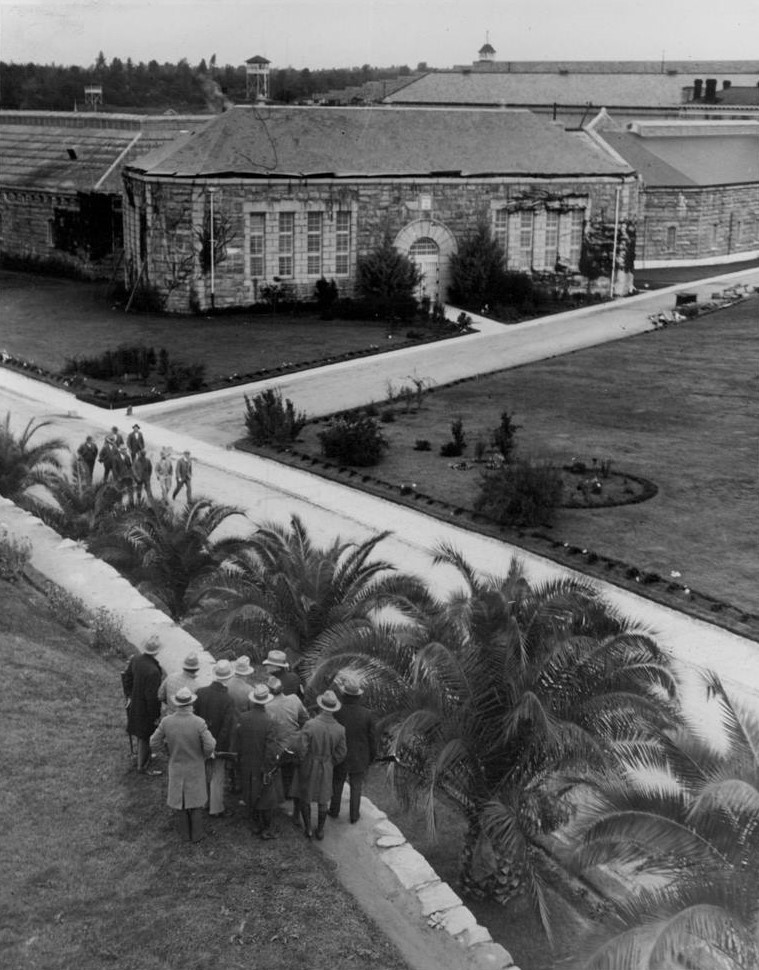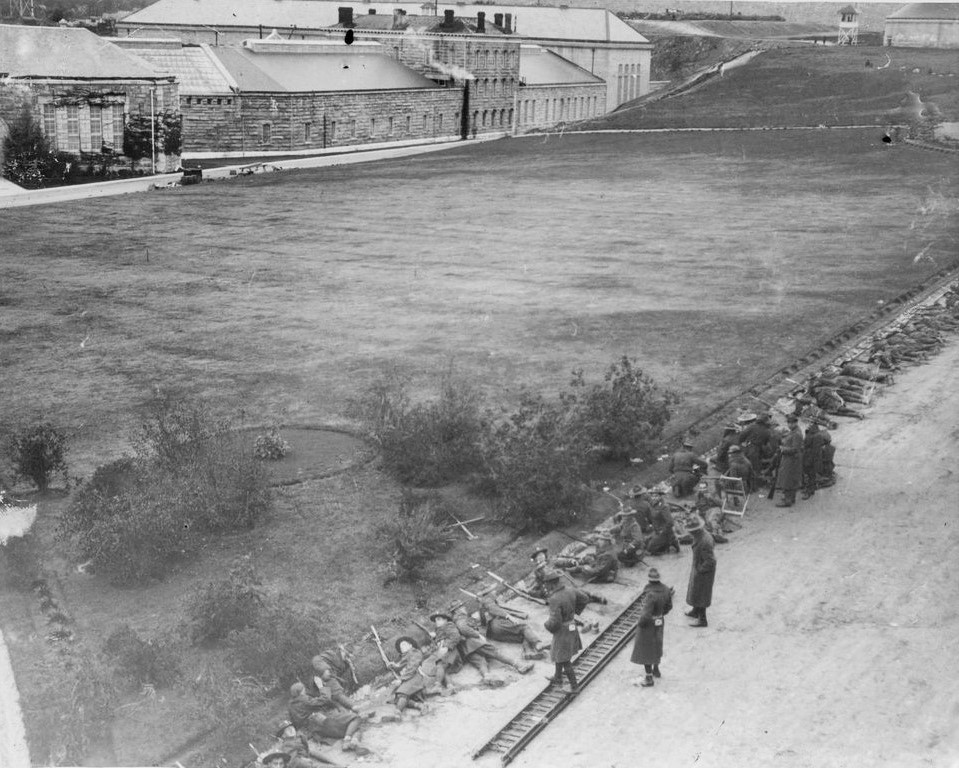Since the 1860s, Thanksgiving has been observed in prison thanks to the efforts of early staff and volunteers.

In 1868, a volunteer San Quentin chaplain organized a food drive to create a Thanksgiving feast for the population.
“Rev. William T. Lucky desires that those who are willing to contribute fruit or other articles for use of the (incarcerated) of the state prison on Thanksgiving shall leave them with Blunt & Dalton (on) Davis Street,” reported the San Francisco Chronicle, Nov. 25, 1868. Fruit dealers ended up donating 18 boxes of fresh apples.
On Thanksgiving, Lucky, Henry Gibbons and James Woodworth helped run special church services, ministering to the incarcerated. “This was the first service of the kind ever held in the prison and will long be remembered,” reported the San Francisco Examiner, Nov. 27, 1868.
Lucky was the the principal of the San Jose State Normal School from 1868 to 1873, volunteering his time twice a month at San Quentin.
The following year, Lucky and others at the prison continued the effort with merchants donating fruit and chickens. They also requested books to be donated “as a Thanksgiving offering” to the new prison school and library.
Their early efforts set the groundwork for decades to follow, as demonstrated in the 1890s.
“The convicts in San Quentin prison were given a Thanksgiving dinner yesterday, which consisted mainly of roast pork and fruit. A number of pigs belonging to the prison were killed for dinner. The prisoners were given a holiday (using the same rules for) lock-up as on Sunday,” reported the Los Angeles Evening Post-Record, Nov. 27, 1896.
Sport events normalize prison environment in the 1920s
For over a century, sports have played a rehabilitative role in California’s institutions. Today, pickleball and basketball are popular, but in the 1920s, it was baseball.
In 1923, the Hale Brothers winter league baseball team visited Folsom State Prison for a game against the incarcerated team.
“The ball game was followed by a picture show in the auditorium,” according to the Folsom Telegraph, Nov. 30, 1923. “The menu for the (incarcerated) Thanksgiving dinner included roast beef with browned potatoes, macaroni salad, apricot pie, cakes, coffee and milk. The officers and guards were served a fine turkey dinner.”
The following year, The Kesselring All-Stars visited Folsom to play the Represa ball team on Thanksgiving day.
“Mr. Kesselring has secured a bunch of real ball (players) to take on the prisoners on turkey day,” according to the Sacramento Union, Nov. 26, 1924.
Some of the visiting players included Bill Shick, “Cooie” McGinnis, Art Luddy, Bill Wion, Lefty Thompson, Merwin Shea, and Pat Reagan.
After the game, prison management arranged special music and a Thanksgiving feast.
In Folsom, fresh pork was reserved for special events, such as Thanksgiving and Christmas.
“Five large Berkshire hogs, weighing over 1,500 pounds, were consumed by the convicts at the prison on Thanksgiving day. Fresh pork is a rare treat to the prisoners, being given them only on special occasions,” reported the Folsom Telegraph, Nov. 26, 1904.
Warden includes incarcerated females in holiday events

In 1926, Warden Smith at San Quentin made arrangements for incarcerated females to participate in special events.
“Thanksgiving day, the women were provided with seats on a neighboring elevation, outside the walls, so they could witness the field sports. New Year’s day, the women occupied seats in the mess hall with the men and enjoyed the vaudeville show,” reported the Petaluma Argus-Courier, Jan. 5, 1926. “The male prisoners gave their female companions a cheer and a round of applause when they appeared and took the special section of seats provided for their use.”
Man paroled after saving officer during Thanksgiving riot


A large-scale riot, held when rules were relaxed in honor of Thanksgiving in 1927, ended up in multiple deaths, including some staff.
W. Jones, an incarcerated person, stepped in to defend Guard A.J. Deeley during the riot.
Deeley recommended parole for Jones and thanked him for his life-saving efforts that day.
“When Deeley was stabbed, Jones carried the guard up the stairway and administered first aid treatment. Deeley believes that Jones saved his life,” reported the Sacramento Bee, June 25, 1928. “Jones was committed to Folsom from Riverside on a grand larceny conviction April 17, 1922.”
The State Board of Prison Directors approved his parole, returning him to England to be with his father.
The Governor called out the California National Guard to help put down the 1927 riot. Those responding included the 184th Infantry Regiment, the 143rd Field Artillery Regiment, 40th Tank Company and 115th Observation Squadron.
Great Depression puts pinch on holidays
The Great Depression began with the 1929 stock market crash, followed by bank failures in 1930. The economy didn’t begin recovering until the late 1930s.
In 1932, Folsom Prison Warden Court Smith brought a baseball game to the institution in honor of Thanksgiving.
“An all-star team of felons was slated to meet a (visiting) baseball team as part of Folsom prison’s Thanksgiving celebration,” reported the United Press, Nov. 24, 1932. “After the ball game, the prison day was filled out with a band concert, roast pork, sweet potatoes, gravy, trimmings and pie. It will be Folsom’s biggest Thanksgiving day with 2,764 prisoners participating.”
While people held in state hospitals and youth correctional facilities were offered turkey in 1933, those in San Quentin and Folsom State Prison were served pork.
“Twelve tons of turkeys were prepared for serving at state mental hospitals and correctional schools, but (those in) the two penitentiaries had to be content with roast pork and pork sausage,” reported the United Press, Nov. 30, 1933. “Folsom convicts were offered a menu including roast pork, sage dressing, apple sauce and apricot pie. San Quentin prison’s Thanksgiving menu consisted of pork sausage, apples, mashed potatoes, white bread, raisin pie, cheese and coffee with milk and sugar.”
Those in the San Francisco city jail were not served turkey that year, for the first time in 15 years. Instead, they were offered “boiled salt pork and potatoes.”
“Times are too hard and funds too short,” according to jail spokesman Lt. James Boland.
Thanksgiving in prison today
Today, Thanksgiving and holidays are observed in CDCR institutions through special visiting events and activities.
These rehabilitative efforts can be traced back to early prison chaplains and staff who tried normalizing the environment to help the incarcerated return to society after incarceration.
By Don Chaddock, Inside CDCR editor
Office of Public and Employee Communications
Learn more about California prison history.
Follow CDCR on YouTube, Facebook and Twitter.
This post was originally published on this site be sure to check out more of their content.






